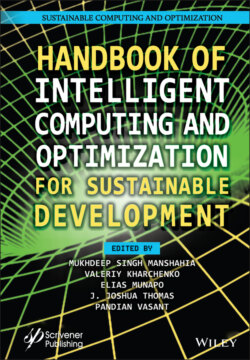Читать книгу Handbook of Intelligent Computing and Optimization for Sustainable Development - Группа авторов - Страница 69
2.6 Advantages and Limitations
ОглавлениеThe conventional silicon-based computing has extensively empowered human being in technological aspect. But because of few drawbacks, the traditional computation is approaching toward the limitations of its processing power and design strategy. These technical challenges include immense energy consumption, vast memory requirement and heat dissipation. For this reason, the contemporary era is proposing the concepts of unconventional computation among which DNA computing is one of the promising domains. The advantages of this emerging methodology of computation are as follows:
• Huge storage capacity: DNA molecules have huge information storage capacity. It requires a trillion times less space to store same amount of data than an existing storage media. Approximately, 215 million gigabytes of data can be stored in a single gram of DNA oligonucleotide and several copies of the DNA strand can also be synthesized.
• Massive parallelism and speed: The elementary operations using DNA strands are slow, but here the parallelism prevails. Because of the massive parallel processing capabilities of DNA molecules, 1018 processors working in parallel in an in vitro assay can be handled by DNA computation. Thus, DNA computer has the capability to perform more than 100,000 times the speed of existing super computer.
• Low energy consumption: DNA computer uses 1 joule of energy to perform 1019 operations; on the other hand, existing super computer consumes same amount of energy to perform 1010 operations which makes it 109 times less energy efficient.
Thus, DNA molecule is considered as effective tool in nano-scale engineering which is capable of solving computational, reasoning and classification problems [15–19]. The intention of this chapter is to theoretically build the backbone of DNA computer which is necessary to take a leap toward the shift in paradigm. The major findings of this chapter are listed below:
• Demonstration to develop the models of DNA ANN using DNA oligonucleotides.
• Use of DNA sequences as input and output signal to constructs the basic architecture of the neuron.
• Illustration of the design strategy of DNA logic gates using the hybridization of the strands and the conformational deviations of the DNA secondary structures.
• Design strategy of DNA logic circuit to develop and control nano-scale DNA devices.
• Applications of nano-DNA-devices which can be designed using DNA ANN, DNA logic gates and logic circuit.
DNA computation is the successful amalgamation of computer science and biological science. This emerging way of computation has the capability to revolutionize the technological perspective of coming era if the following limitations can be resolved.
• As the algorithms of DNA computing involves a huge amount of DNA sequences and data as well, the probability of error exponentially increases.
• The steps of the methodologies using DNA oligonucleotides need human and mechanical assistance which often claim a long time.
• Biological experiments are very expensive. Thus, the implementation problem of DNA computation algorithms is one of the major limitations.
The present advent of DNA computing cannot allow it to replace classical silicon-based computation as now DNA computers are not easily programmable. But several research works are being conducted globally and scientists are dedicated in development of more systematic and error-tolerant protocols.
